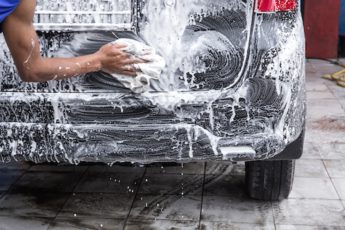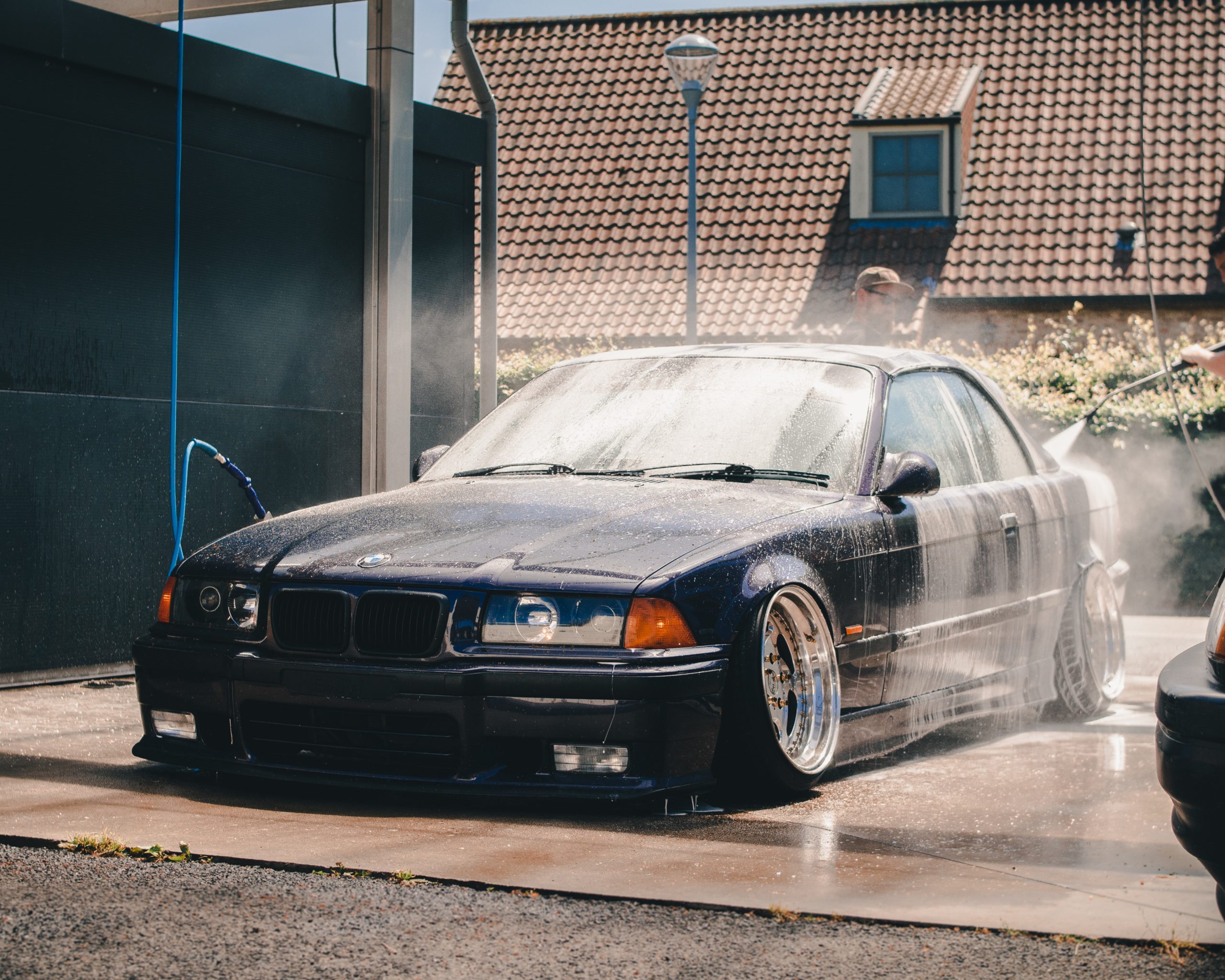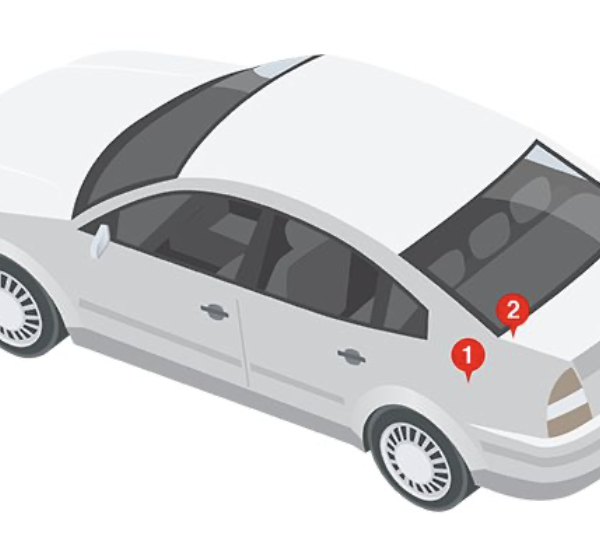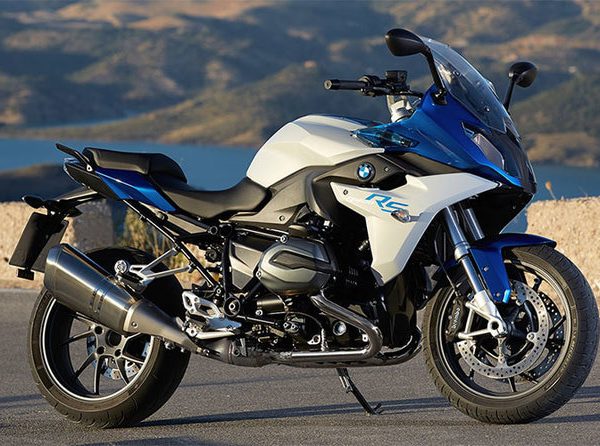Tips For Every Adventure: Summer Paint Damage Woes

Don’t let the heat and nature of Summer cause your car paint pains. Our Tips for Every Adventure series is finally tackling the summer season and everything it can do to your beloved paint job. Worried about faded paint and sun damage? We’ve got you covered. Learn how to protect your car’s paint from the harsh sun, high temperatures, and dust in this guide.
Summer Heat and Sun Damage
Obviously the big issue with Summer is that the Sun is doing its best to set you on fire. But what does that mean for your car paint? Well, the paint job on your vehicle can face a lot of problems from the high temperatures and sun’s uv rays. UV damage can cause oxidation and deterioration of the pigment, leading to dullness, rough texture, and potential flaking of the paint. Prolonged exposure to the sun’s rays can also cause the Clearcoat to fade. Clearcoat is the outermost layer of the modern paint job system. It acts as a protective layer and provides a gorgeous finish for your paint job. While its doing its best to protect your car paint, heat and an abundance of direct sunlight can significantly reduce the vibrancy of your car’s exterior. In addition to the risk of faded paint, high temperatures can soften and warp your paint and Clearcoat. This leaves your car’s exterior more vulnerable to nicks and scratches. Sun damage can start with slight discoloration or hazing, indicating that the Clearcoat is compromised. Sun-damaged areas may appear dull, faded, or rough compared to unaffected areas.
Summertime Debris
Summer is a beautiful season. Nature truly blooms. Unfortunately, sometimes nature blooms on your car and causes problems for your car paint. It’s lovely that the birds are chirping but that sound also heralds the arrival of bird droppings. The acidic qualities of bird droppings can weaken the paint’s protective layer, making it more susceptible to other forms of damage. If you’re parking in the shade (and you should), look out for tree sap. Like bird droppings, tree sap can be sticky and corrosive. The heat can make it harder to remove and more likely to damage the paint. Finally, increased summer driving means increased risk of bug collision. This means When you spot these issues, immediate treatment is a must. If the bird droppings, sap or squashed bugs are not removed quickly, they could leave behind stains or etchings.
Summer Paint Damage Tips
We’ve talked about all the trouble the summer season can cause your paint job. So what can you do to protect the paint on your vehicles from spiking temperatures, a burning sun, and vengeful trees? Here’s just a few helpful things to look out for.
Regular Maintenance
Keeping your car clean is the first step in preventing paint damage. The frequency of washing your car may vary depending on individual driving habits and environmental factors. When your car is exposed to the sun more than five times a week, a weekly wash becomes necessary to eliminate dust, debris, and other contaminants that may harm the paint. Being vigilant about washing your car paint will also allow you to spot the signs of bigger issues like scratches & chips before more extensive damage can occur. Finally, regular car washes will keep your car’s appearance pristine.
Parking in the Shade
Unfortunately, you can’t put sunscreen on your car but there are some steps you can take to minimize the risk of un damage. If you can avoid parking in direct sunlight, you should take that opportunity. Covered parking is a simple solution but it really helps protect your paint job from sun and temperature damage. If you don’t have the option of parking in a garage or a shaded area, we would suggest investing in a high quality car cover. This can shield the exterior of your car from UV rays. When you’re shopping for a car cover, try to find one made of breathable material so it doesn’t trap heat and moisture when it’s applied. Breathable fabrics in car covers are vital as they assist in preventing moisture buildup, thereby reducing the risk of mold and mildew. Ensuring a snug fit is equally vital to prevent the cover from flapping in the wind, which may cause scratches on the vehicle’s surface. Elastic hems and tie-down straps ensure that the cover stays in place, even in strong winds.
Fix Up Your Clearcoat
There are also steps you can try to keep your Clearcoat in good condition. Keeping this layer strong is crucial to shielding your paint from corrosion and keep your car looking pristine. Regular maintenance and touch ups can ensure that the Clearcoat remains intact, providing continuous protection for your vehicle. For small scratches and chips, we recommend the touch up Pen or Brush. If it is around the size of a pencil eraser, you’ll want to use the Pen. If it’s about the size of a quarter, you’ll want to use the Brush. Apply 2-3 coats of Clearcoat until the damaged area is covered. Wait 15 minutes in between coats so they can dry. Once you’ve finished applying the Clearcoat, allow it to dry for 48 hours.
From our factory out on the West Coast, TouchUpDirect will have your road weary cars, trucks and bikes looking their best once more. In addition to our amazing paint and applicators, we have incredible accessories that will help you get that professional shine for your vehicle. Still a little confused on how to apply paint for that stone chip repair? Don’t worry about it! We’ve got step by step instructions that will help you get the best coat possible for your vehicle. Between our blog posts and the giant library of instructions we’ve created, we’ve got touch up paint walkthroughs for everyone. And if you don’t want to read, check out the many instructional videos on our YouTube page.

 Cart
Cart
 Help Desk
Help Desk






